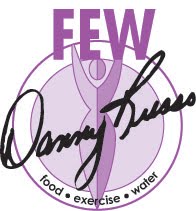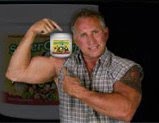
Just when you thought those guys with thick glasses and white lab coats did nothing but fondle their beakers all day, you realize scientists actually have a sense of humor. You remember your periodic tables from high school chemistry class? Those boxed matrici of upper case consonants and subscript numbers? Every one of those table elements has some kind of fancy Latin name associated with it. For example we all know Na, the main ingredient of common table salt, is better know scientifically as sodium. It turns out some smart Alexander actually named sodium after the Medieval Latin word sodanum, which translates roughly as "headache remedy". Oh, those slide-rule kidders. Apart from saturated fat, has there ever been a substance that has caused more headaches in the history of nutrition than sodium?!
Sodium is one of the most abundant elements on our planet and is critical for regulating proper human bodily function. Without going all Grey's Anatomy, we'll just say sodium is essential for nerve function because it balances out potassium in your system with an opposing electrical "charge". But when your body is over saturated with salt, bad stuff happens -like high blood pressure; like kidney disease and increased risk of stroke. And unfortunately, in America, we tend to like a pinch of food with our salt. By one counting, 90% of us regularly roar past the recommended intake of 2,300 milligrams of sodium per day. Hop on down to your local Spuds and Duds and look at the shelves. You'll see salty chips; salty canned food, salty prepared food - even food that doesn't taste particularly salty (e.g., bread) is packed with sodium. And we're not even counting the more insidious presence of sodium in baked goods (baking soda and baking soda), fast food (MSG), and of course the not so subtle preservatives used in bacon and hot dogs (sodium nitrate).
The residual effects of sodium can spell problems for most people, but can be even worse for women due to the unique properties of - well - being a girl. Your old friends the Hormones are not particularly helpful with respect to the negative effects of sodium on your body. The influx of certain female hormones, particularly estrogen and progesterone tend to overstate the presence of sodium in the body. When that happens, your internal systems react by trying to put out the sodium fire by diluting it with water. Hence the water weight gain and painful bloating in the stomach and, occasionally, breast areas.
If that's not bad enough, cellulite cells, most common on women's thighs, also tend to become like little storage bins for retained water. (Although recent research suggests this may be more closely related your body's attempt to dilute toxins such as pesticides which are also believed to reside in the cellulite tissues.)
But if you live in a saltine society, what the heck are you supposed to do about getting your sodium levels down? Here's a few tips from the guru of get thin; that sultan sodium-tamer, Danny Russo:
1. Eat more fresh foods. Canned and/or prepared foods tend to be eons higher in salt content, so stay away.
2. Make friends with bananas. And baked potatoes and cantaloupe and spinach. Why? Because they are all particularly dense in potassium content. As we mentioned, potassium is healthy "Ying" to sodium's water-attracting "Yang"
3. Skip the chips. There are all kinds of alternatives these day to super salty snacks. Rice cakes are particularly good substitute as they give you crunch without the sodium punch.
4. Drink water at specified times of the day. (Danny Russo has an excellent hydration routine you can read about here.) Water weight gain is usually a consequence of your body feeling dehydrated and going into survival mode to literally "hold your water". This effect will be exacerbated by a high sodium diet, so drink up ladies!
5. Take the time to prepare your own food. When you buy food for convenience, nine times out of ten, it will be loaded with sodium. The best way to control your sodium intake is to know exactly how much sodium you're taking in. The best way to do that is home cookin'. (It tastes better too).
6. Learn to cook with other spices. Again, salt is a convenient way to season food, but it's far from the only way. There are more spices that you can shake a rack at and common items like lemon, garlic and herbs can be used in infinitely different ways. You want to be more creative? Here's your chance.
7. Attend a Danny Russo "For Women Only" seminar near you. Danny can talk to you more in depth about water retention and how to make a low sodium diet a regular part of your health regimen along with exercise and proper hydration. Russo has been helping women scat the fat and feel good for thirty years now. His wife Janet, co-director of his FEW (Food Exercise Water) fat loss programs is a trained dietitian and can provide you with some super low sodium recipes that won't leave you feeling thirsty or unsatisfied.
So, c'mon all of you salt-of-the-earth girls. Say sayonara to all that sodium. Your body will heart you for it.
.jpg)

No comments:
Post a Comment